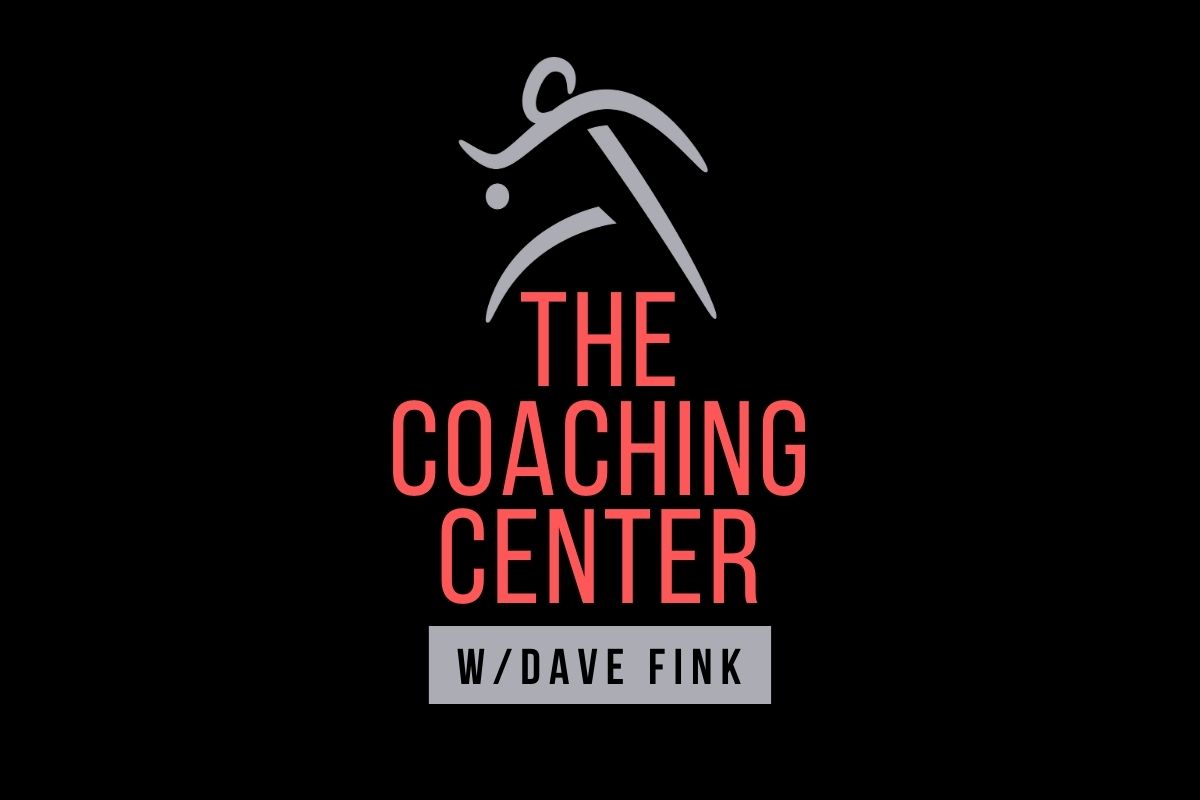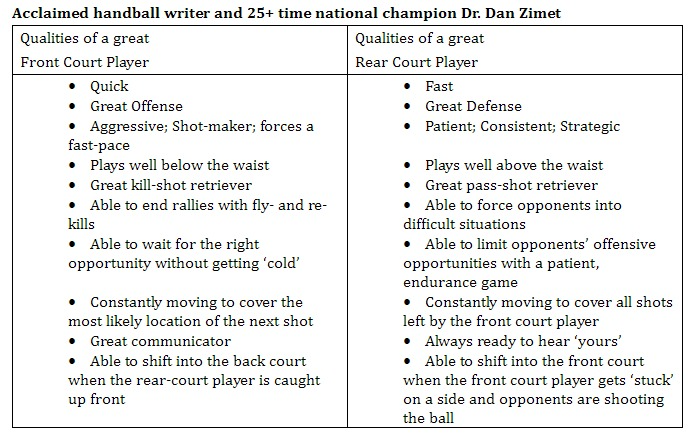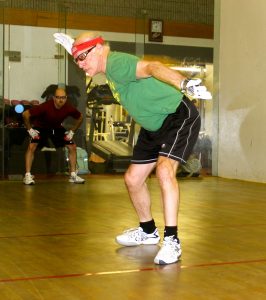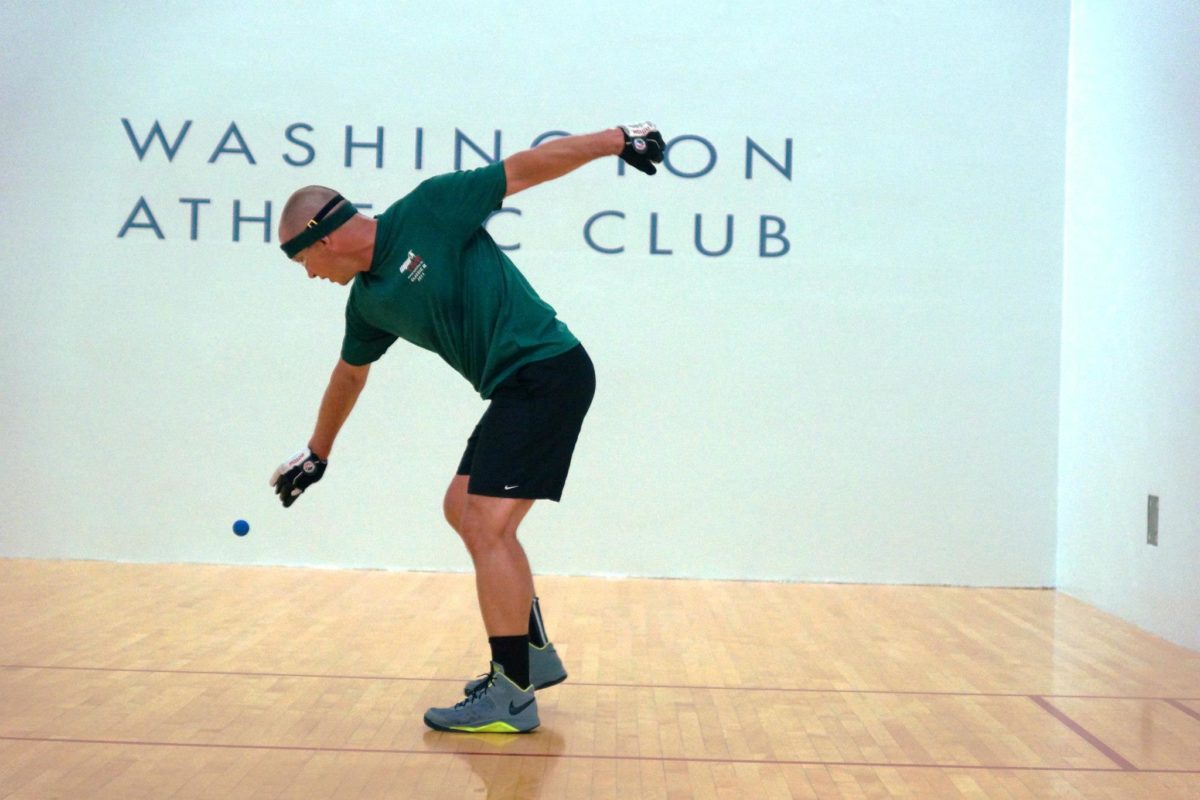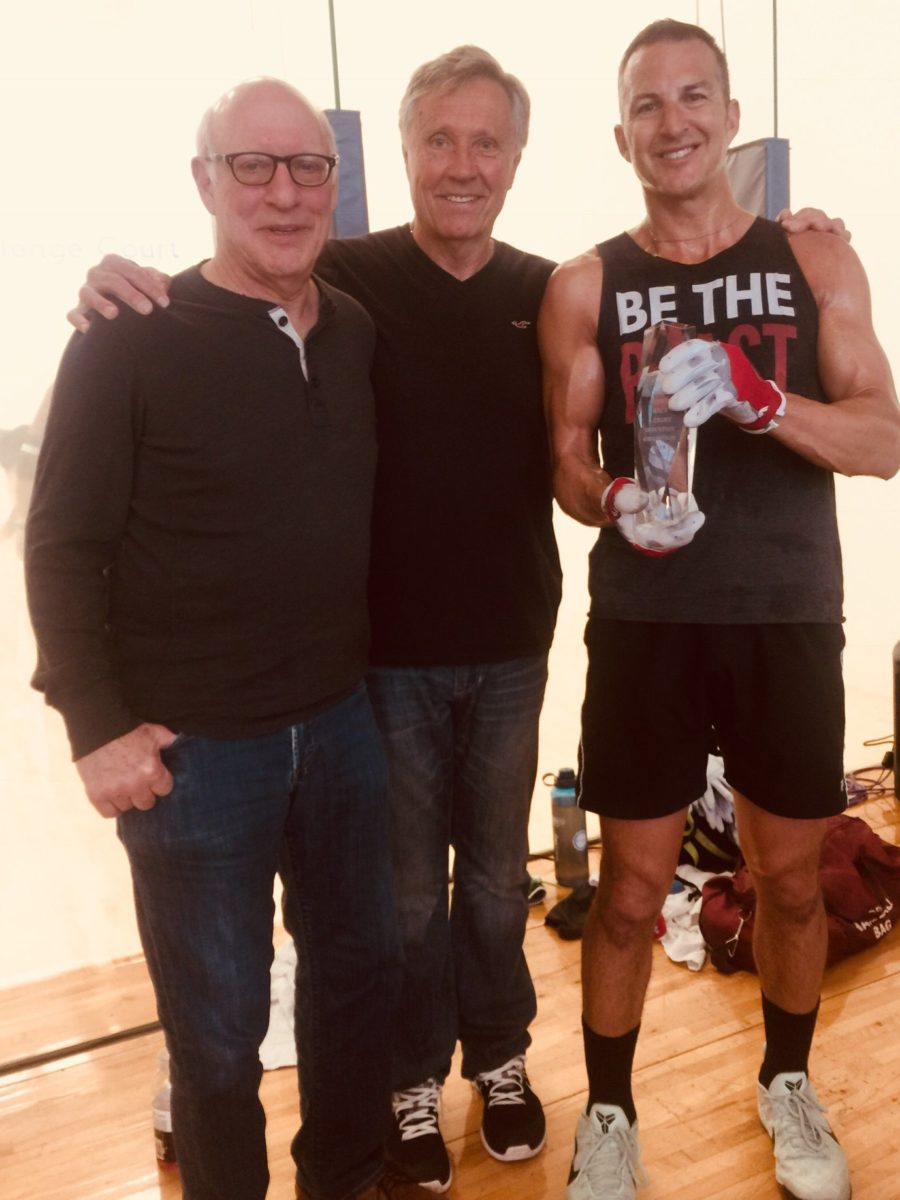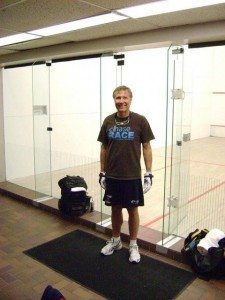WPH Press, 12/15/20
The WPH Coaching Center has discussed Coaching, How to See a “Fast Ball,” The Six Walls, The Most Important Shot, The Diet, What Separates Paul Brady, The 3-Wall Power Serve, the Paddle Kill and much more. The WPH Coaching Center will continue to examine the various strategies and shots that will make you a better handball player, as this week’s WPH Coaching Center will examine Doubles Strategy.
Most handball players play mostly doubles, particularly in weekly games at their club or outdoor courts. Generally teams are divided, players quickly choose to play on the left or right side, teams alternate serves, and play is underway. How much thought is given to strategy? How much better would teams play with a game plan?
In this edition of The Coaching Center, we will discuss what doubles teams need to do pre-match, who should play front and back, what is the best serve in doubles, doubles strategy, the recipe for tournament success in doubles, and the importance of supporting your partner. Of course, we gathered an esteemed group of experts to explain these key ingredients to doubles success.
Pre-Match
Much of the success in doubles comes before the first ball is it. How do you stack the odds in your favor?
 2019 (Current) 3-Wall Pro/Am national doubles champion Rodney Fink
2019 (Current) 3-Wall Pro/Am national doubles champion Rodney Fink
Winning in doubles starts with picking the right partner and practicing together. According to RFC, this partner is not necessarily the best singles player, but the player that best compliments your game.
Preparing for Success
Now that we have picked the right partner, how do you decide who should roam the back of the court and who should dominate the front of the court? What are the qualities of a great front court and great back court player?
What is the best serve?
A serve that dominates in singles may not be as effective in doubles. For example, a power serve down the wall may not be as effective in doubles because the returner is already close to the side wall.
Canadian Legend Merv Deckert
One serve that you can try in doubles is around the walls, usually angling to hit the door, it usually goes between the players, and the player on the left is not sure if he should take it or leave it for his partner. There has to be really good communication as to who is going to return this serve
Doubles Strategy from RFC (Rodney Fink)
The strategy in doubles is exactly the same as singles: play percentage handball and exploit your opponent’s weaknesses. The five situations do not change:
- Find a serve that works, and stick with it until it doesn’t
- The primary object of the return of serve is to drive your opponents to deep court
- Offensive opportunities will be fewer (and must be lower)
- On defense, patience is the key
- Anticipation—you and your partner must know the strengths, weaknesses and tendencies of your opponents (Expect the unexpected)
*Pro/Am doubles is quite simple: the Am should serve the ball get out of the way
Where to play when your partner is serving?
Many doubles teams stick to their left side/right side configuration on the serve, but this may not necessarily be optimal.
Hall of famer and multiple-time 3-Wall and 4-Wall pro national doubles champion John Bike, Jr.
“I believe the server’s partner should play on the right side and allow the server to play left. Even being a left-hander, I feel like I’m stuck on the left wall (if I play the left) and can’t really be effective. When I’ve played with my brother Lowell (a solid A player and right-hander), he serves and plays the left and I may run to the back court if he needs coverage. This strategy allows my partner to be more engaged and gives the team a psychological boost.
Recipe for Doubles Tournament Success
Winning the singles and doubles at the same tournament is one of the most difficult tasks in the sport.
Canadian handball legend Merv Deckert
- A lesson I will never learn..it is difficult to slam, I’ve only done it a couple of times, and I usually come up short in both events.
Teams that win are doubles specialists. You don’t usually see them enter the singles as well in a tournament.
- Winning teams know exactly which shots to leave for their partner, they do not poach shots from their partner, especially shots down the middle, you sometimes see the right side player stick out his left to take the shot, when his partner is moving in with his strong right to do something better with the ball.
Supporting your Partner
The psychological dynamics of doubles can be as crucial to success as the shot making. Teams must be unified, particularly when a partner makes a mistake.
Merv Deckert
Support your partner when they miss a shot, getting down on them, probably really hurts their confidence which is so important in our game. When I played doubles with Dave Chapman in the Canadian Nationals, he played with such confidence that it rubbed off on me. He always made positive remarks, you will get the next one, or great serve.
RFC Fink
The best partner is the one who never gives up and who brings positive energy and confidence to every match
Thank you to our esteemed panel of experts who analyzed the keys to doubles success.
David Fink
WPH Senior Writer










